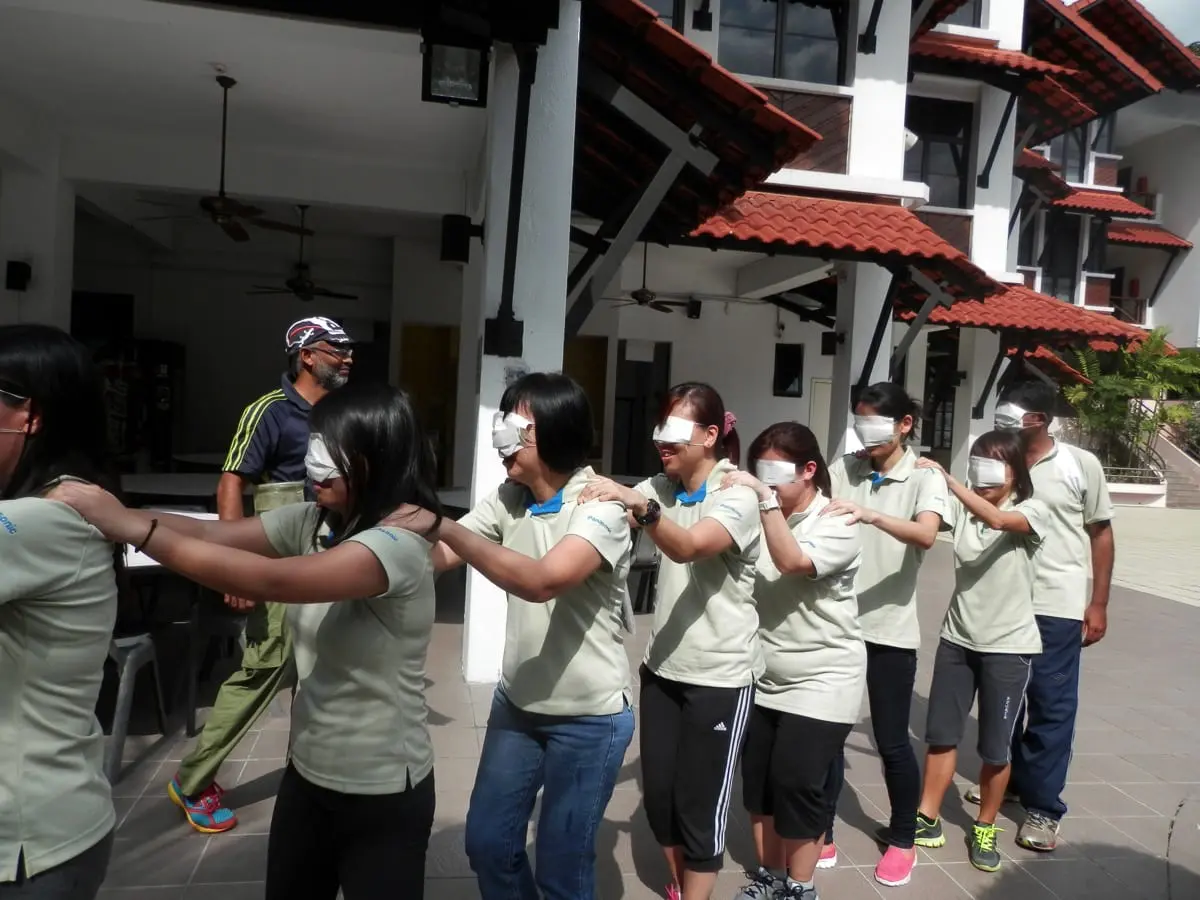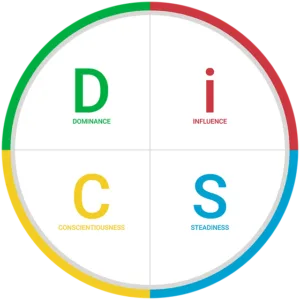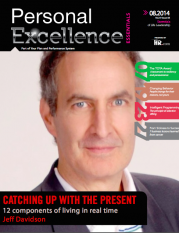In today’s competitive business landscape, effective team collaboration and talent retention are crucial for organizational success. One powerful tool that can facilitate both of these objectives is the DISC model, which categorizes individuals into four distinct behavioral styles: Dominance, Influence, Steadiness, and Conscientiousness.
By understanding and utilizing the DISC quadrants, teams can tap into the unique strengths and perspectives of each team member, foster better communication and cooperation, and ultimately empower their teams to achieve higher levels of productivity and success. In this blog post, we will explore How DISC Quadrants Empower Teams and Improve Talent Retention strategies, leading to a more harmonious and thriving work environment. So, let’s delve into the world of DISC and discover how it can transform your team dynamics and elevate your organizational performance.

Use DISC to Retain Talents
Using DISC assessments can be an effective method of retaining talent within an organization. By understanding employees’ behavioral styles and preferences, employers can tailor their management approach to meet the specific needs of individuals. This leads to improved communication, increased job satisfaction, and a higher likelihood of employees feeling valued and appreciated. Utilizing DISC assessments can ultimately contribute to a positive work environment and enhance employee retention rates.
DISC Quadrants Empower Teams
The DISC quadrants provide a valuable perspective on personal traits, which is essential for understanding how teams work. Now, let’s explore each quadrant in detail.
Dominance (D): Leaders who are confident, determined, and focused on achieving goals.
Influence (I): Team motivators who are enthusiastic, sociable, and bring creativity.
Steadiness (S): Reliable team players who are patient, harmonious, and consistent.
Conscientiousness (C): Problem-solvers who are analytical, detail-oriented, and systematic.

Gaining insight into these quadrants promotes:
1. Effective Communication: Tailored communication styles for seamless interaction.
2. Enhanced Teamwork: Leveraging diverse strengths for optimal task allocation.
3. Conflict Resolution: Addressing conflicts by acknowledging and respecting individual differences.
4. Improved Productivity: Efficient task delegation based on individual preferences.
5. Leadership Development: Identifying and nurturing effective leaders within the team.
Background of DISC
The DISC personality assessment tool is rooted in trait-based analysis and is credited to William Marston, a renowned psychologist from Harvard who obtained his Ph.D. in 1921. This model offers a straightforward qualification tool that facilitates understanding of individuals in the workplace through four defining quadrants. These quadrants provide insights into behavioral tendencies, aiding in comprehension and interaction within teams and organizations.
Dominant – People high in this trait are direct and assertive, they think independently, ambitious and usually take a quick and active approach toward solving problems.
Interpersonal – People who are attuned to others in social settings, and people centric. Usually extroverted, their primary means of getting things done is through people.
Steady – People who are persistent and steady taking measured stable approach towards life. Usually quite accommodating and undemanding.
Conscientious – People who are interested in precision and accuracy. They want structure and they focus intensely on facts
Above is a concise overview of the terms employed in DISC. While team activities can foster bonding, their impact often stops there. However, integrating tools like DISC or other assessments can elevate the experience. Such tools unveil colleagues’ work approaches, temperaments, communication styles, and behavioral tendencies. From executives to directors, there’s a growing desire to delve into this insight. They’re eager to engage us in crafting programs where individuals willingly share and explore these facets in our dynamic workshops.
In our dynamic team-building and strategy-mapping sessions, participants are naturally drawn to understanding themselves and their colleagues’ behavioral traits. A well-facilitated session encourages individuals to openly share their traits, fostering a deeper connection and trust among team members. It’s about uniting to tackle common office challenges, with DISC serving as the mirror reflecting behavioral traits. But it goes beyond surface level. As facilitators, we delve into mapping behavioral traits alongside core responsibilities, strengths, and our team’s shared purpose.
This synergy brings the essence of DISC alive in our sessions, where participants find assurance in its non-threatening nature. DISC doesn’t highlight adverse traits; instead, it amplifies the best in each individual. Each of the four traits has produced remarkable individuals, and while we may favor one, our profiles never limit us. Skills from other quadrants can be cultivated and mastered, enriching our collective capabilities.
Teams Empowerment and DISC Quadrants

A. Composition of effective teams using DISC quadrants
Balancing the DISC quadrants within a team is vital for a harmonious workplace. Recognize diversity in styles, leverage complementary strengths, and encourage open communication. Promote collaboration and address conflicts constructively. Identifying individual strengths in each quadrant helps maximize productivity and fosters a supportive team culture. In conclusion, embracing DISC diversity enhances teamwork and overall performance.
B. Understanding team dynamics based on DISC quadrants
The DISC model categorizes individuals into four quadrants: Dominance (D), Influence (I), Steadiness (S), and Conscientiousness (C). Challenges can arise within teams based on these quadrants:
a) Dominance (D): Potential conflicts may arise due to a direct and assertive approach, leading to clashes with collaborative team members.
b) Influence (I): Conflicts may stem from prioritizing socializing over task completion, causing frustration among efficiency-focused team members.
c) Steadiness (S): Resistance to change and preference for stability may hinder innovation and adaptability within the team.
d) Conscientiousness (C): Conflicts may arise from prioritizing perfectionism over timeliness or practicality, leading to frustration among teammates.
Strategies to resolve conflicts:
– Foster open communication.
– Promote active listening.
– Seek common ground.
– Embrace diversity and individual strengths.
– Encourage flexibility and compromise.
– Provide training and development opportunities.
Understanding and addressing potential conflicts based on DISC quadrants can lead to stronger teamwork and improved overall performance.
C. Applying DISC quadrants in team communication and collaboration
Applying the DISC quadrants in team communication and collaboration can lead to improved understanding, reduced miscommunication, and increased productivity within the team. By tailoring communication styles based on DISC quadrant preferences and utilizing the strengths of each quadrant, teams can enhance collaboration, promote efficient decision-making, and achieve better results.
Having conducted such sessions with corporate teams in Singapore, Malaysia, Indonesia and Hong Kong, we have helped corporate executives and civil servants leverage on getting to know their team members better. Appreciating the strengths individuals bring and accentuating the value of having diverse traits described in DISC. DISC is an easy to use tool, when well facilitated with coherent learning outcomes, it will help teams better manage the differences and work towards a common goal.
Lately I have even spotted patterns in behavioral traits seen in the Civil Service, Financial Institutions based here and Gen Y’s entering the workforce. Do get in touch with us, if you want to find out more and we can share our anecdotal data at your office if you are based here in Singapore or Malaysia. You can drop us an e-mail at office@teamworkbound.com. We will be more than happy to share with you the data we have, based on professions and DISC types. Hopefully it will give you a heads up on strategizing the talent base you need and perhaps the skill sets your current team needs to acquire.
In conclusion, implementing DISC quadrants in teams brings numerous benefits. It promotes self-awareness, encourages understanding among team members, and facilitates the creation of a harmonious and efficient working environment. By embracing the DISC model, organizations can unlock the full potential of their teams and drive remarkable outcomes.
About the Author: Kinza Mariam
Related Posts
- Categories: DISC profiling tool, People analytics
We worked with the management team comprising of Heads of departments, Vice Principals and the school Principal for Horizon Primary school, using DISC personality profiling systems.
- Categories: DISC profiling tool, People analytics
Understanding the 4 communication styles using the DISC personality systems is shared by Ebnu Etheris. We have placed a resource, DISC communication card that you can use as well. This includes our narrative on program for Silkair.
Top 10 activities
This blog will showcase top 10 experiential activities that we have conducted in our training programs. Included are models associated with experiential learning, team dynamics, understanding personality and leadership. We will showcase crisp summary of good books we have read on this blog as well.
Ebnu Etheris
MA.IDT and B. Ed & Trn
Founder Teamworkbound
Magazine Feature

Personal Excellence Magazine (Aug 2014 issue) based in Canada featured our article.

Human Resources Magazine (July 2012 issue), featured Teamwork Bound views on what it takes to engage senior managers.
Our Evaluations
Blog articles
Get started with Teamwork Bound
Want to learn what Teamwork Bound can do for you? See for yourself with a free trial, tests and short in house speaking engagements. We will assure you that our program evaluations meet 85% percentile score, failing which we will not charge for our training sessions.
